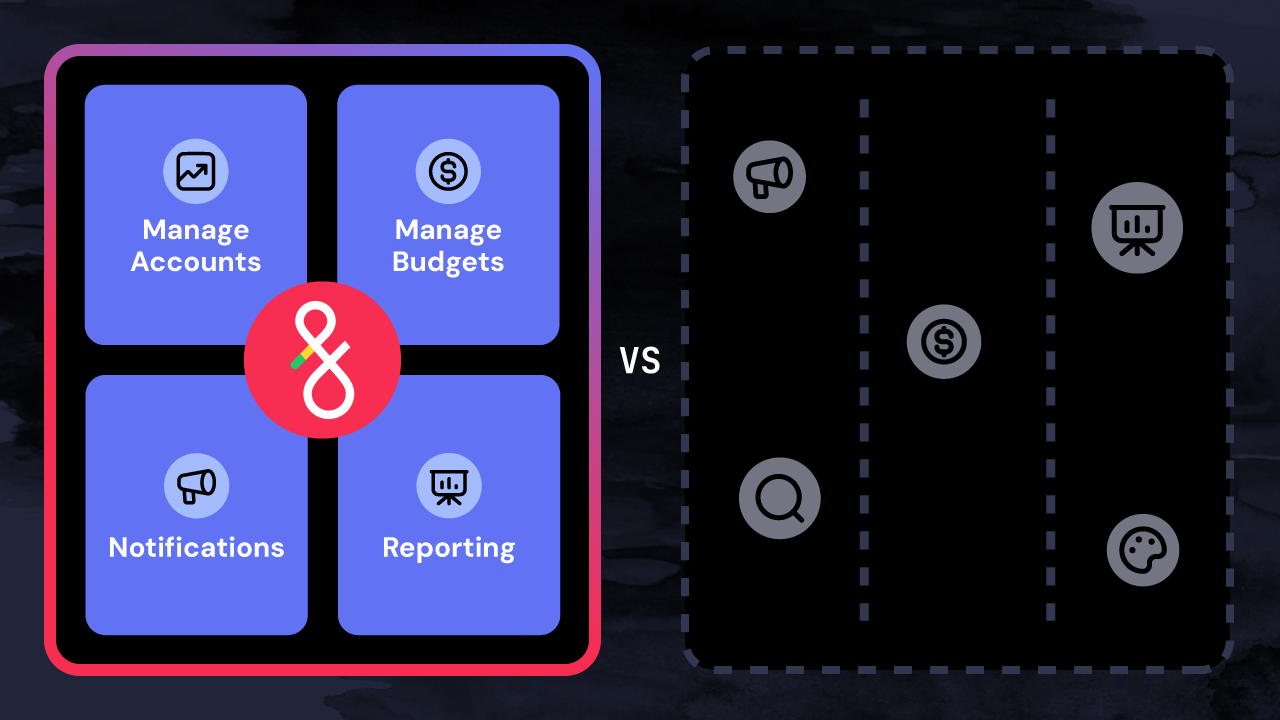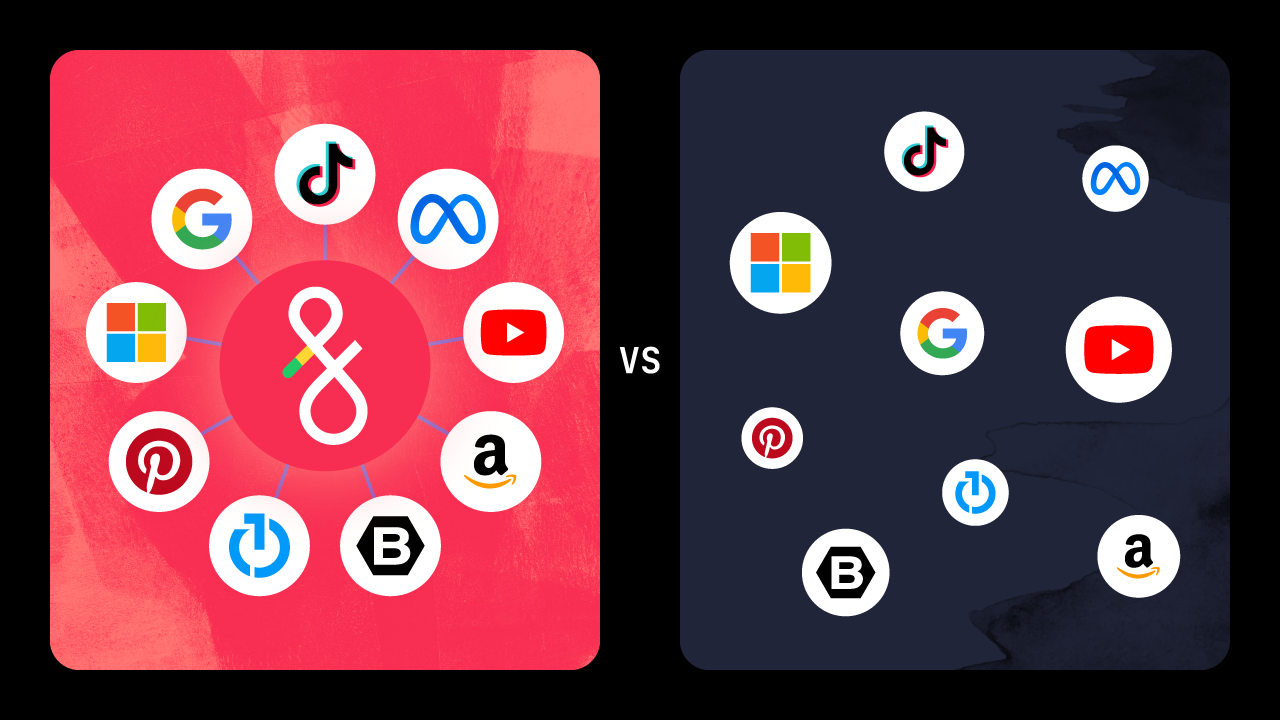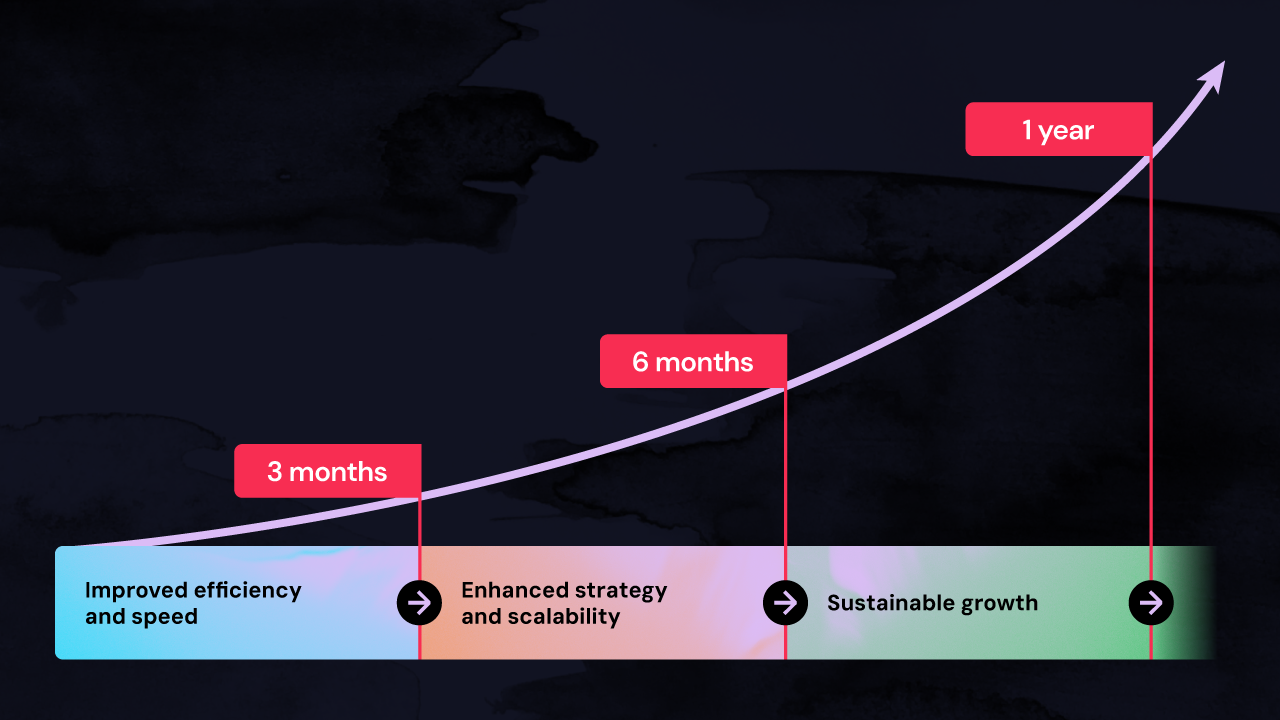Google has had a long history of making iterative and revolutionary changes over time. Performance Max (aka PMax) is just that next evolution that Google has — but it’s not the first time we’ve seen Google evolve. We’ve seen the transformation progress over time, first with Expanded Text Ads (ETAs) then Responsive Text Ads (RTAs) and now arriving at PMax.
While Google is constantly evolving the ability for you to improve your advertising reach and relevance, it can also be challenging to adapt and stay ahead of the curve — especially with resource-intensive campaign types like these. The following article will help you maximize your PMax campaigns. You will learn:
- An introduction and overview of Performance Max
- How to navigate and apply recent innovations to Performance Max
- How to maximize and scale Performance Max
An Introduction to Performance Max
To get acquainted with Performance Max and how to scale this campaign type, it helps to put it into the context of Google’s ongoing evolution. Check out this video from Fluency’s Chief Product Officer, President and Co-Founder, Eric Mayhew, for a complete breakdown.
Understanding Performance Max and what makes it unique
Google defines Performance Max as a campaign type that allows you to access all your google ads inventory – Search, Display, YouTube, Discover, Gmail and Maps - from a single campaign. But what makes Performance Max unique is its ability to harness the power of both AI and machine learning to meet the consumer where they’re at. To build Performance Max campaigns, you need to provide a set of headlines, text phrases, descriptions and imagery. From there Google will put their algorithm to work to engage the consumer across their various platforms, deploying ads that are most likely to perform best and continually optimizing for relevance.
Recent innovations to Performance Max, and implications for advertisers
Google has made Performance Max a major focus in recent years. Many advertisers were “forced” to adopt Performance Max and migrate various campaign types onto the new format. Automation solutions make these migrations significantly more efficient, but any new format comes with its own set of operational and strategic considerations.
One key consideration is the recent rollout of search themes within Performance Max. This feature is designed to refine targeting through specific customer search queries or topics that are critical for conversion. You may be wondering what this means for you. As Google has explained, “When you add search themes, you’re telling Google AI you want to reach that traffic in your Performance Max campaign across all Google Ads inventory, including Search, YouTube, Gmail, Discover, Maps, and Display. Search themes also help you find audiences across channels based on users’ search behavior.”
This enhancement aims to secure a wider reach across Google's diverse advertising channels. Search themes are particularly recommended for scenarios where the content on landing pages might not be fully up-to-date, organizations are venturing into new markets, launching new products or services without a wealth of historical data, announcing promotions or seasonal offers, or striving for quicker campaign optimization and performance increase. With search themes, you can now fine-tune your campaigns more effectively, ensuring they connect with their intended audience precisely when and where it matters most.
How to maximize your reach and impact with Performance Max
As noted previously, cross-platform advertising with PMax enables organizations to seamlessly integrate their advertising efforts across Google's entire ecosystem — from Search and Display to YouTube, Gmail, and Google Maps. This holistic approach not only amplifies the reach of your ads but also ensures consistency in messaging, which is crucial for brand recognition.
By harnessing the power of PMax, you can automatically place your ads on the most effective platforms, targeting the right audience at the optimal time. This strategy is not just about expanding reach; it's about making every interaction meaningful and synchronized across user experiences, thereby maximizing both conversion rates and ROI.
However, advertisers must be active in managing Performance Max campaigns. Maximizing the effectiveness of cross-platform advertising campaigns continues to require an understanding of each platform's unique characteristics. It’s not enough to simply “set and forget” Performance Max campaigns. To be successful with them, you must continue to actively track performance through reporting tools like Data Explorer, and work with your clients and stakeholders to ensure conversions driven through Pmax campaigns are meeting strategic business objectives. One good best practice is to focus Performance Max on a very specific campaign with clearly defined goals that allow Google’s algorithm to “learn” quickly. Once you are seeing results, you can leverage automation to broaden your campaign scope.
The increased importance of creativity with Performance Max campaigns
Since Pmax contains visual ad formats, you will also need to focus on your ad creatives. With PMax, you’re no longer selecting keywords or setting bids, which makes the creative elements in the optimization process a lot more significant. This transition from text-only ads introduces fresh challenges, especially for those who had previously honed their approach with text-only ads. Examples of some of these challenges include:
- Managing an overwhelming number of assets (texts, images, videos) that complicates maintaining a consistent brand voice or message across all ad variations.
- Creative fatigue, highlighting the risk of audiences becoming less receptive if the same set of assets is used for too long, underscoring the importance of regularly refreshing creatives to maintain ad relevance and performance.
- Ad quality issues arising from the increased likelihood of element disapproval in ads with numerous text and visual components.
- The necessity for regular testing of different assets and diligent tracking of PMax campaign data to effectively mitigate these challenges.
Operational and strategic implications for scale
While PMax offers tremendous potential, due to Google lacking a clear understanding of your specific objectives, you may encounter challenges in scaling PMax. These include limited control over ad adjustments, problems in pinpointing data origins and issues with managing media assets effectively. While Google's system may seem user-friendly for individual accounts, managing the intricacies of imagery, messaging, targeting strategies, and budgeting across multiple accounts at the agency or enterprise level demands a level of automation to ensure everything is managed effectively and efficiently.
A compelling example from one of our partner's experiences highlights the importance of incorporating automation into PMax campaigns. Previously, tasks like compiling creative elements, crafting ad copy, and adjusting campaign settings took 15 to 30 minutes per campaign. However, automation has streamlined this process to less than a minute for creating numerous campaigns. This efficiency boost results in saving thousands of hours, which can now be directed towards strategic initiatives.
Learn more about maximizing your PMax efforts
If you’re looking to hone your PMax strategy, or learn more about your options for automation, we encourage you to get in touch with our team to learn more.

.avif)




